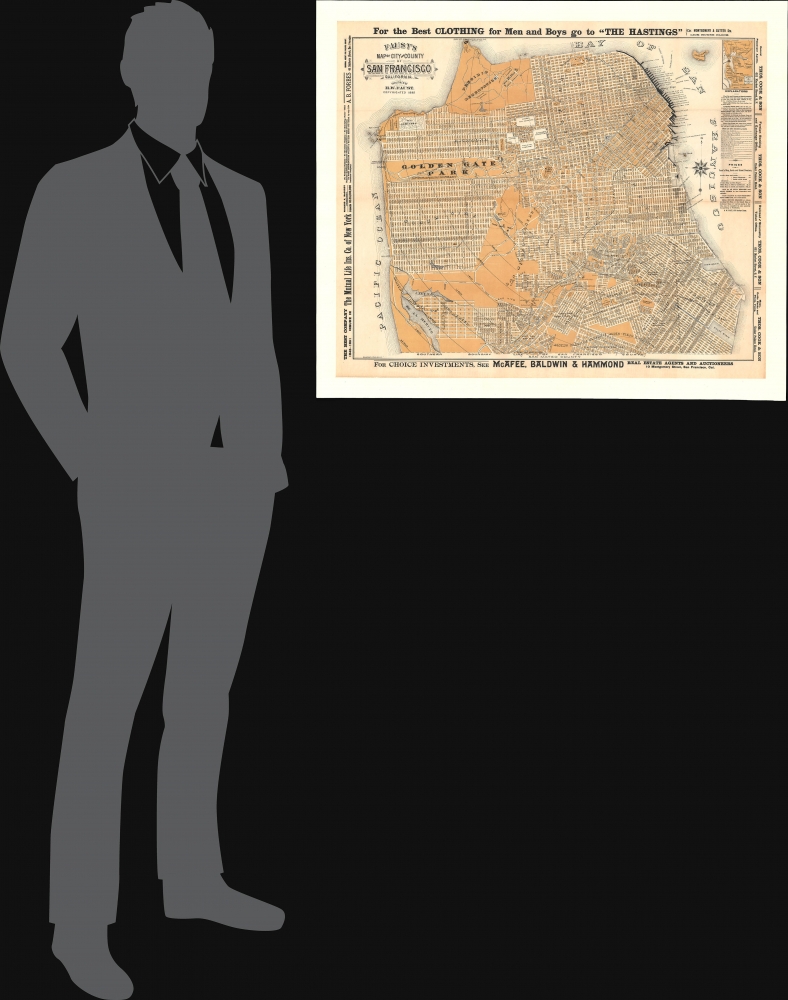Digital Image: 1892 Faust Map of San Francisco
SanFrancisco-faust-1892_d
Title
1892 (dated) 24.5 x 30.5 in (62.23 x 77.47 cm) 1 : 23100
Description
FOR THE ORIGINAL ANTIQUE MAP, WITH HISTORICAL ANALYSIS, CLICK HERE.
Digital Map Information
Geographicus maintains an archive of high-resolution rare map scans. We scan our maps at 300 DPI or higher, with newer images being 600 DPI, (either TIFF or JPEG, depending on when the scan was done) which is most cases in suitable for enlargement and printing.
Delivery
Once you purchase our digital scan service, you will receive a download link via email - usually within seconds. Digital orders are delivered as ZIP files, an industry standard file compression protocol that any computer should be able to unpack. Some of our files are very large, and can take some time to download. Most files are saved into your computer's 'Downloads' folder. All delivery is electronic. No physical product is shipped.
Credit and Scope of Use
You can use your digial image any way you want! Our digital images are unrestricted by copyright and can be used, modified, and published freely. The textual description that accompanies the original antique map is not included in the sale of digital images and remains protected by copyright. That said, we put significant care and effort into scanning and editing these maps, and we’d appreciate a credit when possible. Should you wish to credit us, please use the following credit line:
Courtesy of Geographicus Rare Antique Maps (http://www.geographicus.com).
How Large Can I Print?
In general, at 300 DPI, you should at least be able to double the size of the actual image, more so with our 600 DPI images. So, if the original was 10 x 12 inches, you can print at 20 x 24 inches, without quality loss. If your display requirements can accommodate some loss in image quality, you can make it even larger. That being said, no quality of scan will allow you to blow up at 10 x 12 inch map to wall size without significant quality loss. For more information, it is best consult a printer or reprographics specialist.
Refunds
If the high resolution image you ordered is unavailable, we will fully refund your purchase. Otherwise, digital images scans are a service, not a tangible product, and cannot be returned or refunded once the download link is used.
Cartographer S
Henry William Faust (May 1850 - March 5, 1915), publishing as 'H. W. Faust,' was a San Francisco-based cartographer who for many years (c. 1882 - 1903) published a pocket map and guide to San Francisco and occasionally other maps. Faust was born in Glasgow, Missouri of German-American parentage. He moved to San Francisco, then Oakland, sometime in the 1870s. Though his path to cartography and publishing are unknown, Faust's earliest guide and map were published in 1882. He also was involved in civic organizations. In his later years, he became an active amateur astronomer, contributing to the local publication Sidereal Messenger, a Monthly Review of Astronomy. More by this mapmaker...
William Thompson Galloway (March 31, 1844 - March 20, 1924) was a lithographic printer based in San Francisco in the late 19th century. Details on Galloway's life are scant. He was born in Philadelphia, Pennsylvania and migrated to San Francisco in his youth, initially working as an accountant. In 1873, he joined Grafton Tyler Brown and Co. (established 1865), lithographers and steam press operators. Brown, who was African-American as well as a fellow Pennsylvania native, was also an accomplished artist and illustrator. Much of the information available on Galloway has been discovered by biographers of Brown (namely Robert J. Chandler, who wrote a 2014 book about Brown). As for Galloway, he and business partner Otto Schoning purchased Brown's firm in 1878, leaving Brown free to pursue landscape painting. Although the new firm, 'William T. Galloway,' broke sharply with Brown's style, the two men shared an office, and Brown appears to have continued to contribute to the new printshop's output for a time. Galloway kept up a regular output, but his works appeared to drop off in the 1890s, though the company operated in some form until at least 1935 (newspaper accounts from the 1880s and 1890s suggest that Galloway had enough employees to field a company baseball team for a local amateur league). Despite the company retaining his name, Galloway himself appears to have taken up other business ventures in the early 20th century. He died in March 1924, apparently a wealthy man (a bitter familial dispute over his estate followed his death). Learn More...




